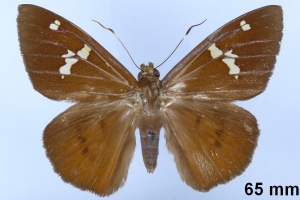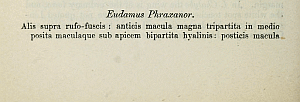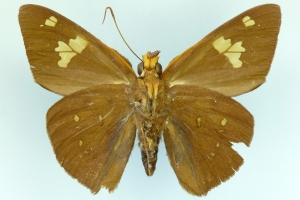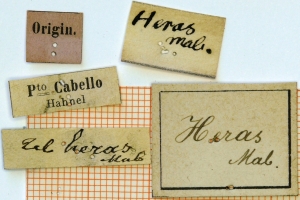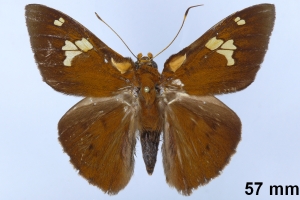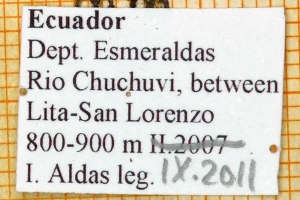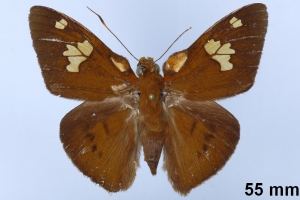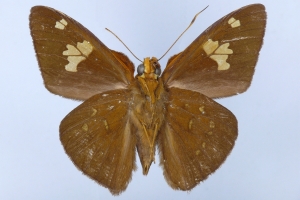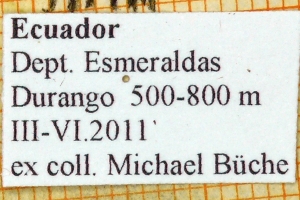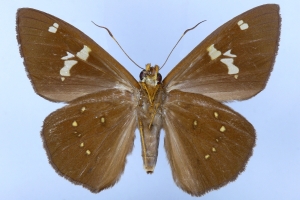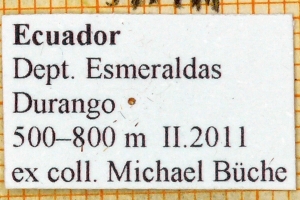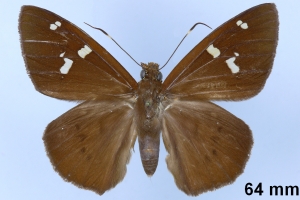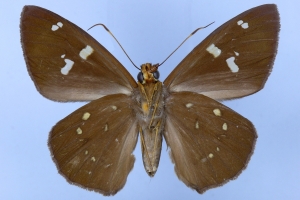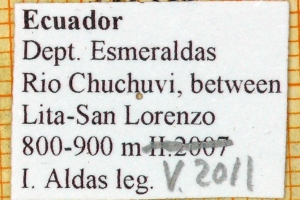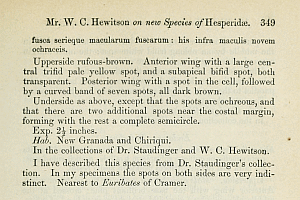Version 5 / 7 vom 4. Juli 2024 um 18:36:03 von Jürgen Rodeland
Länder:

 +7Kontinente:MAKISA
+7Kontinente:MAKISA


 +7Kontinente:MAKISA
+7Kontinente:MAKISAInhalt
2. Diagnose
2.1. Männchen
1-3: Holotypus ♂ von Telegonus heras Mabille, 1888, Daten siehe Etiketten (fot.: Ernst Brockmann, Fotos bearbeitet: Michel Kettner), coll. Zoologisches Museum der Humboldt-Universität zu Berlin.
4-6: ♂, Daten siehe Etiketten (coll., det. & fot.: Ernst Brockmann, Fotos bearbeitet: Michel Kettner)
7-9: ♂, Daten siehe Etiketten (coll., det. & fot.: Ernst Brockmann, Fotos bearbeitet: Michel Kettner)
2.2. Weibchen
1-3: ♀, Daten siehe Etiketten (coll., det. & fot.: Ernst Brockmann, Fotos bearbeitet: Michel Kettner)
4-6: ♀, Daten siehe Etiketten (coll., det. & fot.: Ernst Brockmann, Fotos bearbeitet: Michel Kettner)
2.3. Erstbeschreibung
3. Weitere Informationen
3.1. Andere Kombinationen
- Eudamus phraxanor Hewitson, 1876 [Originalkombination]
- Dyscophellus phraxanor (Hewitson, 1876)
3.2. Synonyme
- Telegonus mutius Plötz, 1882 [synonymisiert von Zhang, Cong, Shen & Grishin (2022: 11)]
- Telegonus heras Mabille, 1888
3.3. Faunistik
Nach [Global Biodiversity Information Facility] kommt die Art in Costa Rica, Panama, Kolumbien und Trinidad und Tobago vor.
Locus typicus gemäß Erstbeschreibung: New Granada and Chiriqui [Kolumbien; Panama].
(Autor: Michel Kettner)
3.4. Literatur
- Erstbeschreibung: Hewitson, W. C. (1876): Description of twenty new Species of Hesperidae. — The Annals and Magazine of Natural History, including Zoology, Botany, and Geology. Fourth Series 18: 347-355.
- Zhang, J., Cong, Q., Shen, J. & N. V. Grishin (2022): Taxonomic changes suggested by the genomic analysis of Hesperiidae (Lepidoptera). — Insecta Mundi 921: 1–135. [PDF auf journals.flvc.org]









